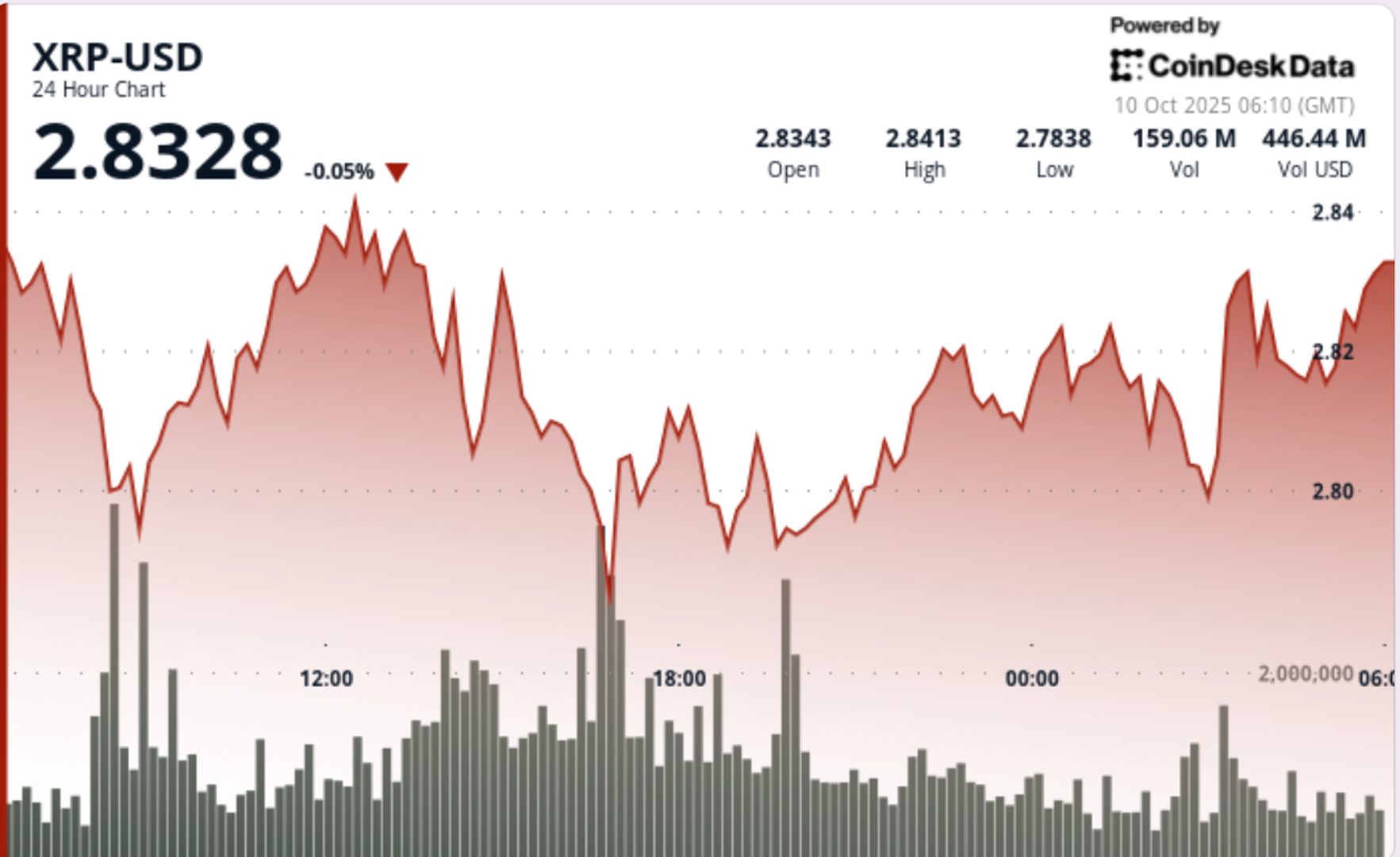
XRP has been trading within a tight range of $2.78 to $2.85, concealing significant institutional selling and increasing leverage risks. Exchange reserves have surged to nine-month peaks with 440 million tokens distributed over the past 30 days, while futures open interest has risen close to $9 billion.
Bulls are maintaining the $2.78 support level, yet distribution patterns are limiting upward momentum.
News Background
In the 24 hours leading to October 10, XRP showed limited movement, starting near $2.83 and ending at $2.82. The token saw a brief spike to $2.85 but faced rejection, with trading volumes surging past 123 million at 08:00 — double the average for the day — indicating significant institutional participation at critical points. This activity occurs as traders position themselves ahead of macroeconomic developments, with Federal Reserve policies and regulatory clarity influencing market sentiment.
Price Action Summary
- XRP fluctuated between $2.79 and $2.85, creating a 2% range.
- Resistance remained strong at $2.85, with a rejection noted at 12:00.
- The support level at $2.78 consistently held, backed by high trading volumes.
- The late session drifted from $2.83 to $2.82, with 1.6 million prints indicating ongoing distribution.
- The last bars reflected decreasing volume, suggesting potential selling exhaustion near $2.82.
Technical Analysis
The $2.85 region has solidified as a resistance point after several rejections, while $2.78 serves as the crucial support pivot. Increased exchange inflows and distribution from significant holders add to the near-term downside risk, particularly as leverage builds with futures open interest nearing $9 billion.
However, the repeated defense of $2.78 indicates institutional accumulation at this level. A breakthrough above $2.85 could lead to a retest of the $2.90 to $3.00 range, whereas a dip below $2.78 may accelerate movement towards $2.72.
What Traders Are Watching?
- If $2.78 will continue to serve as the structural bottom.
- The potential unwinding of leveraged positions, which could introduce volatility during attempts to retest $3.00.
- Whale distribution trends versus signs of accumulation during dips.
- ETF and Federal Reserve catalysts as potential drivers for breaking out of the $2.78–$2.85 range.

